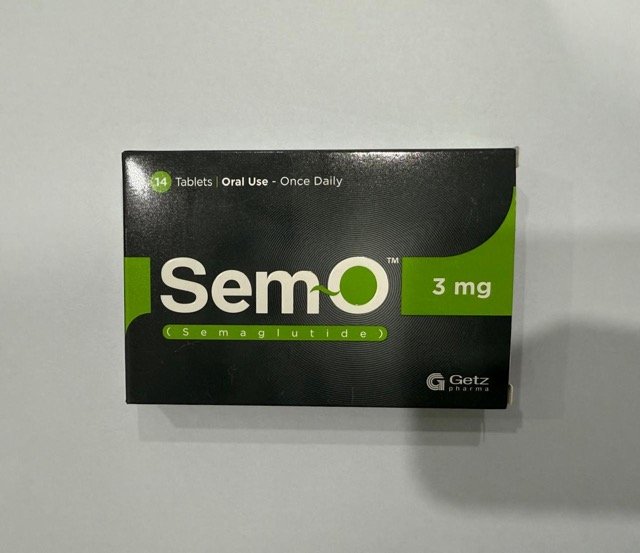Topical Cocaine (Goprelto) is used as a topical anesthetic and vasoconstrictor agent used to perform local diagnostic and therapeutic procedures.
Topical Cocaine Uses:
-
Anesthesia:
- Generic topical solution: Used as a topical anesthetic agent (and vasoconstrictor) for mucous membranes of the oral, laryngeal, or nasal cavities
- Goprelto: Used as a topical anesthetic agent for mucous membranes when performing diagnostic procedures and surgeries on or through nasal cavities
Topical Cocaine (Goprelto) Dose in Adults
Topical Cocaine (Goprelto) Dose for Anesthesia:
-
Intranasal (Goprelto):
- Two cocaine solution-soaked cottonoid pledgets (each pledget provides 40 mg cocaine hydrochloride) should be inserted in each nasal cavity against the septum; the solution may be left on the septum for up to 20 minutes; remove pledgets and continue with the procedure.
- The maximum dose: 160 mg (4 pledgets) or 3 mg per kg of cocaine hydrochloride per procedure per surgery.
-
Topical (generic solution):
- Dosage is determined by the area to be anesthetized, tissue vascularity, the technique of anesthesia, and individual patient tolerance; use the lowest dose necessary to produce adequate anesthesia; may use concentrations of 1% to 10%, the most frequently used concentration is 4%(maximum total dose: 3 mg/kg or 200 mg).
- Lasts for 30 minutes or longer depending on the concentration and vascularity of anesthetized tissue. A reduced dosage should be used for children, the elderly, or debilitated patients.
Topical Cocaine (Goprelto) Dose in Children
Topical Cocaine (Goprelto) Dose as a Topical anesthetic:
Note:
- Use concentrations of 1% to 4%; the lowest effective dose should be used; use fewer dosages in children and debilitated patients; dose is determined by patient tolerance, anesthetic technique, vascularity of tissue, and area to be anesthetized. It is not recommended to use solutions >4% as there is an increased risk and severity of systemic toxicities.
Maximum total dose:
-
Children:
- Topical: 1 to 2 mg/kg/dose
-
Adolescents:
- Topical: 2 to 3 mg/kg or 200 mg, whichever is less
Pregnancy Risk Category: C
- The placenta can quickly cross with cocaine and the mother can get the same concentrations.
- Mother and baby suffer adverse effects from maternal abuse.
- These include congenital malformations and growth restriction in the foetus, neonatal absentence syndrome in infants, preterm labor, and placental abruption.
Cocaine use during breastfeeding:
- Breast milk can quickly become pregnant with cocaine.
- There have been reports of infants suffering from irritability and hypertension after their mothers used illicit intranasal cocaine.
- The infant's urine and serum were tested for cocaine.
- Breastfeeding infants can be affected by maternal abuse, which can lead to convulsions, diarrhea and vomiting.
- Manufacturers do not recommend that you use nasal spray during breastfeeding because of the potential for severe adverse reactions in breastfed babies.
- Instead, pump and dispose of milk for 48 hours following nasal application.
- The amount of cocaine in breast milk after illicit use is variable. Therefore, it is important to stop breastfeeding until you can evaluate the mother.
Dose in Kidney Disease:
Dosage adjustment not necessary.
Dose in Liver disease:
Dosage adjustment not necessary.
Systemic reactions may occur with the topical solution as it is excessively and rapidly absorbed.
Side Effects of Topical Cocaine (Goprelto):
-
Central nervous system:
- Headache
-
Respiratory:
- Epistaxis
Less common side effects of Topical Cocaine (Goprelto):
-
Cardiovascular:
- Decreased Heart Rate (Low Doses)
- Myocardial Infarction (Lenders 2013; Makaryus 2006)
- Tachycardia
- Vasoconstriction
- Ventricular Arrhythmia (Lenders 2013)
-
Central Nervous System:
- Central Nervous System Depression (May Follow CNS Excitation)
- Central Nervous System Stimulation
- Excitation
- Nervousness
- Restlessness
- Tonic-Clonic Seizures
-
Gastrointestinal:
- Vomiting
-
Neuromuscular & Skeletal:
- Tremor
-
Ophthalmic:
- Corneal Changes (Epithelium Sloughing)
- Corneal Ulcer
- Mydriasis
-
Miscellaneous:
- Fever
Contraindications to Topical Cocaine (Goprelto):
- Hypersensitivity to cocaine, other ester-based anesthetics or any component of the formulation
Warnings and precautions
-
Seizures:
- Cocaine may lower the seizure threshold. Higher risk is associated with seizures and abnormal EEG signals.
- Seizure development should be closely monitored in patients.
-
Cardiovascular disease
- Patients with uncontrolled hypertension, unstable myocardial disease, coronary artery disease, congestive heart failure, and uncontrolled hypertension may experience blood pressure and heart beat elevations for up to 60 minutes after topical application.
-
Cocaine abuse: [US Boxed Warning]
- CNS stimulants such as cocaine hydrochloride, have a high risk of abuse and dependence.
- If you have a history of drug abuse, be cautious.
- For the treatment of cardiovascular complications from cocaine abuse, beta-blockers should be avoided
Topical cocaine: Drug Interaction
|
AtoMOXetine |
Could make sympathomimetics' hypertensive effects stronger. The tachycardic impact of sympathomimetics may be increased by atoMOXetine. |
|
Cannabinoid-Containing Products |
Could make sympathomimetics more arrhythmogenic. Guanethidine might make sympathomimetic drugs more hypertensive. |
|
Doxofylline |
Sympathomimetics may enhance the adverse/toxic effect of Doxofylline. |
|
Ioflupane I 123 |
Cocaine (Topical) may lessen Ioflupane I 123's ability to diagnose. |
|
Methemoglobinemia Associated Agents |
Could make local anaesthetics more harmful or poisonous. In particular, there may be an elevated risk for methemoglobinemia. |
|
Solriamfetol |
Sympathomimetics may intensify Solriamfetol's hypertensive effects. |
|
Tedizolid |
Could make sympathomimetics' hypertensive effects stronger. The tachycardic impact of sympathomimetics may be increased by tedizolid. |
|
Linezolid |
Could make sympathomimetics' hypertensive effects stronger. Lower the first doses of sympathomimetic drugs and closely monitor individuals on linezolid for an augmented pressor response. There are currently no suggestions for specific dose adjustments. |
|
Sympathomimetics |
Sympathomimetics' hypertensive effects may be increased by cocaine (Topical). Management: Whenever possible, look at alternatives to using this combo. When used concurrently, keep a close eye out for noticeably elevated blood pressure or heart rate as well as any signs of myocardial ischemia. |
|
Iobenguane Radiopharmaceutical Products |
The therapeutic effects of Iobenguane Radiopharmaceutical Products may be diminished by cocaine (Topical). Treatment: Before administering iobenguane, stop taking any medications that could impede or interfere with catecholamine transport or uptake for at least five biological half-lives. After each dose of iobenguane, wait at least 7 days before giving cocaine. |
Monitoring parameters:
Monitor Vital signs
How to administer Topical Cocaine (Goprelto)?
Intranasal (Goprelto):
- Use only intranasally; should be placed against the septum in the nasal cavity and removed before the procedure.
Topical (generic solution):
- Should be used only on mucous membranes of the oral, laryngeal, and nasal cavities.
- Avoid use on extensive areas of broken skin. May use cotton applicators to apply with, as a spray, or instill directly into the mucous cavity.
Mechanism of action of Topical Cocaine (Goprelto):
- Ester local anesthetic blocks the conduction and initiation of nerve impulses.
- It decreases the neuronal membranes' permeability to sodiumions which causes inhibition of depolarization and blockade in conduction.
- Also, it interferes with the uptake and release of norepinephrine from adrenergic terminals. This causes vasoconstriction
After topical administration to mucosa:
The onset of action:
- Almost 60 seconds
Peak effect:
- Almost 5 minutes
Duration (dependents upon the dose):
- ≥ half an hour; if the mother uses cocaine shortly before birth, cocaine metabolites may appear in the urine of neonates up to 5 days after birth.
Absorption:
- Well absorbed through mucous membranes (~35% absorbed when applied intranasally with cottonoid pledget)); the inflammation enhances the absorption.
Protein binding:
- 84% to 92% of the drug is protein bound, binds primarily to alpha-1 acid glycoprotein (AAG) and albumin
Metabolism:
- Undergoes metabolism and inactivation primarily by nonenzymatic ester hydrolysis and hepatic carboxylesterase 1 to benzoylecgonine (inactive), and by plasma cholinesterase and hepatic carboxylesterase 2 to ecgonine methyl ester (inactive). Also undergoes hepatic CYP3A4 mediated N-demethylation to norcocaine (active).
Half-life elimination:
- 1 to 1.7 hours
Excretion:
- Undergoes excretion primarily via urine (<10% as unchanged drug and metabolites); when a mother uses cocaine shortly before birth its metabolites may appear in the urine of neonates for up to 5 days after birth.
International Brand Names of Topical Cocaine:
- Goprelto
- Kokain
Topical Cocaine Brand Names in Pakistan:
No Brands Available in Pakistan.



.jpeg)



